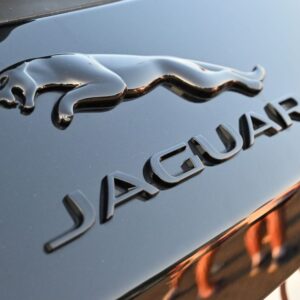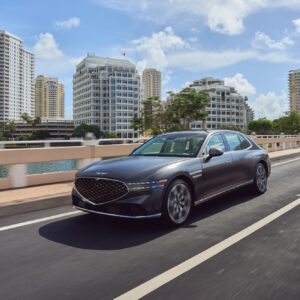Automakers never fail to add new features to their latest vehicles or enhance existing ones. The developments can be anything from more advanced suspension systems to upgraded headlights and a more powerful engine.
To make it easier to track these highlights, many vehicle manufacturers use unique names for their systems and abbreviate them in their brochures.
Why Do Manufacturers Use Unique Terms?
Car manufacturers like to use unique terms to refer to their proprietary technology in several vehicle systems. Often, these terms are heavily technical and composed of several words, hence the use of car acronyms.
Unique, abbreviated names are typically used on vehicle systems like the engine, suspension, and safety systems. In particular, German cars have many abbreviations in their brochures.
Audi and Volkswagen
Volkswagen shares many acronyms with Audi, as the two brands are under the same ownership umbrella.
DSG
Direct-Shift Gearbox (DSG) or Direkt-Schalt Getriebe in German is Audi and Volkswagen’s name for their dual-clutch transmissions.
TDI
TDI means Turbocharged Direct Injection. You might notice that some Audi and Volkswagen models have a TDI badge, meaning the vehicle has a turbocharged diesel engine.
TFSI
Turbo Fuel Stratified Injection (TFSI) is an engine technology exclusive to Audi. This system handles the air-fuel mixture in the combustion chamber. It injects fuel into the combustion chamber where the mix is richer near the spark plug, making the engine run more efficiently.
TSI
Turbo Stratified Injection (TSI) is an engine technology similar to TFSI. TSI combines turbocharging with direct fuel injection to deliver an exceptional balance of power and efficiency. TSI engines are designed to offer more horsepower and torque without compromising fuel economy.
BMW
The German carmaker is itself an abbreviation for Bavarian Motor Works or Bavarian Motoren Werke in German.
BMW iDrive
This system was formerly known as BMW’s Car Communications Computer or CCC. The name would go through several further evolutions, but iDrive refers to BMW’s central infotainment system and operating system. It lets drivers control various vehicle features and modes through the screen.
CS (Competition Sport)
CS indicates that the vehicle has BMW’s competition package, which is an optional upgrade. CS is characterised by increased engine power, consistent lightweight construction, optimised aerodynamics and even sportier suspension and drive components.
CSL (Competition Sport Lightweight)
CSL stands for Competition Sport Lightweight. It used to stand for Coupe Sport Lightweight, but no longer. BMW changed this a while ago. CSL models are lighter, stiffer, and faster than their non-CSL counterparts, making them ideal for track use.
DCT (Dual-Clutch Transmission)
Most high-performance vehicle manufacturers utilize dual-clutch transmissions (DCTs) in their vehicles. These include the likes of Porsche, Ferrari, and Mercedes-Benz.
DCTs are found in BMW’s M cars, and this transmission type offers lightning-fast shift speeds, which makes it ideal for performance use.
However, note that DCT is a term used back when dual-clutch transmissions were new. Nowadays, many automakers get their transmission systems from another company, ZF.
DDC
Dynamic Damper Control (DDC) is an additional option in BMW vehicles that offers variable dampening. It allows the driver to adjust the shock absorbers and struts’ settings to more comfortable or stiffer settings.
DCC/ACC
Dynamic or Active Cruise Control (DCC/ACC) is BMW’s take on vehicle cruise control.
Active Cruise Control is a little unique because drivers can set a distance to the car ahead, and the vehicle will automatically maintain the set distance without the driver pressing the throttle.
Meanwhile, Dynamic Cruise Control is your standard cruise control system where you set a speed and the vehicle maintains it.
DST
Dynamic Stability Control (DST) is BMW’s take on stability control. It controls several traction control systems and incorporates them into one, making it a complete system that eliminates oversteer or understeer.
PDC
Park Distance Control (PDC) is a system of sensors that monitors the distance of obstacles when you’re reversing your vehicle.
Earlier versions of the system just created alerts that tell the driver when nearing an obstacle when parking. Newer versions work in combination with reverse cameras and on-screen graphics.
RDK
RDK stands for Reifendruckkontrolle, which is BMW’s tire pressure monitoring system (TPMS). The word can be broken down into three terms: Reifen (Tire), Druck (Pressure), and Kontrolle (Control).
VANOS
Variable Nockenwellensteuerung or VANOS refers to BMW’s variable camshaft timing system. It’s similar to Toyota’s VVT-i or Honda’s VTEC. Like most modern engines, BMW incorporates variable valve timing in all their engines.
ZF
BMW, Mercedes, and Porsche are some manufacturers that utilize ZF transmissions. This brand stands for Zahnradfabrik Friedrichshafen, which translates to “Cogwheel Factory of Friedrichshafen” in English.
This German company designs and manufactures transmissions for various vehicle manufacturers like Jaguar, BMW, Mercedes, and more. In recent years, many automakers have incorporated ZF’s 8-speed transmission because it’s noted as one of the best.
Mercedes-Benz
ABC
Active Body Control (ABC) refers to the Mercedes-Benz suspension system that uses coil springs with active dampers that are controlled by a computer.
The computer uses sensors to read road conditions and active dampers to firm up or soften the suspension, making the car have less body roll and perform better in a corner. ABC also softens the ride when stiffness isn’t necessary, making it ideal for luxury vehicles that don’t want to sacrifice performance.
EIS
Many vehicle manufacturers refer to this system as a push-button start with keyless entry. As an early adopter of this technology, Mercedes calls this their Electronic Ignition Switch (EIS).
SBC
Sensotronic Brake Control (SBC) is Mercedes-Benz’s take on improving hydraulically controlled brake systems by making them electronically controlled instead. It uses sensors to determine how the brake system would distribute brake pressure to each brake.
Unfortunately, SBC is one of the least liked Mercedes-Benz innovations because it tends to fail frequently.
VGS
Vollintegrierte Getriebesteuerung (VGS) is Mercedes-Benz’s take on having a unique transmission control module. The automaker integrates this system directly into the transmission’s valve body.
Volvo
BLIS
Volvo’s Blind Spot Information System (BLIS) is a blind spot monitoring system. It uses proximity sensors to notify the driver if there are vehicles quickly approaching or sitting in their blind spot. This is useful if the driver is intending to switch lanes in traffic.
ISGM
An Integrated Starter Generator Module (ISGM) is an alternator and starter motor condensed into a single part to help facilitate engine start/stop functions. This system also helps regenerate electricity for a hybrid vehicle’s batteries.
SIPS
Volvo is a brand that’s known for its safety. SIPS stands for Side Impact Protection system, giving a vehicle improved sills, pillars, energy-absorbing material, and airbags in the doors. It began development in the 1980s, and this system has been in every Volvo vehicle since then.
VEA
Volvo’s Engine Architecture (VEA) is a type of engine meant to be fitted in a variety of vehicles.
Vehicles under the Volvo Engine Architecture can either be turbocharged or twin-turbocharged. This system focuses on developing one engine type instead of several, making this singular engine architecture perform optimally for various vehicles.
Nearly every engine in Volvo’s vehicle lineup has a version of its four-cylinder 2.0L engine.
Keep Your European Vehicle Performing at Its Best
Understanding those abbreviations shows how much engineering depth goes into every European car. Systems like BMW’s VANOS, Audi’s TFSI, and Volvo’s SIPS reflect decades of refinement in performance and safety. To preserve that craftsmanship, your vehicle needs parts built with the same precision and care.
That’s where CarParts Euro comes in. We offer quality Euro parts all in one place, sourced from trusted manufacturers and built for exact fit. Whether you drive a Mercedes, BMW, or any European icon, CarParts Euro carries premium parts from top brands made to match your vehicle’s pedigree because exceptional performance deserves nothing less. From suspension and braking components to electrical systems, each part meets the standards expected of these finely engineered cars.CarParts.com, the company behind CarParts Euro, has earned drivers’ trust through consistent service and dependable products. Its platform offers precision parts for peak vehicle performance, featuring brands engineers depend on such as Bosch, Meyle, and Continental for exact fit and lasting performance. If you need Euro car parts in the US, visit CarParts Euro and keep your vehicle performing the way its makers intended.
Any information provided on this Website is for informational purposes only and is not intended to replace consultation with a professional mechanic. The accuracy and timeliness of the information may change from the time of publication.



















